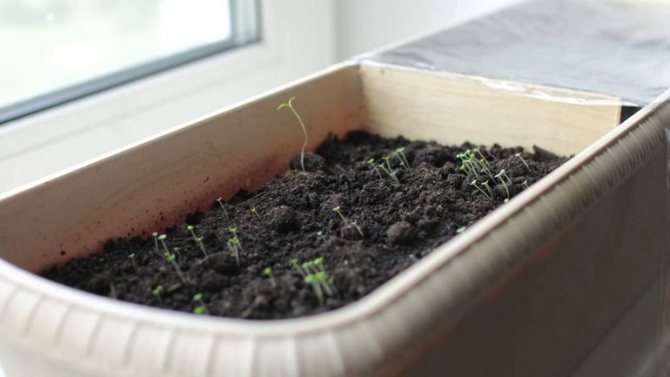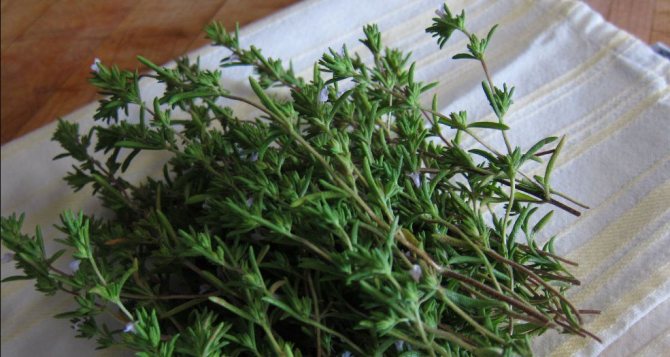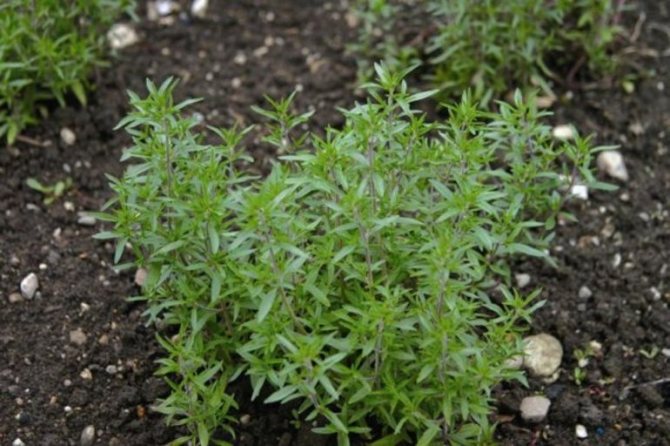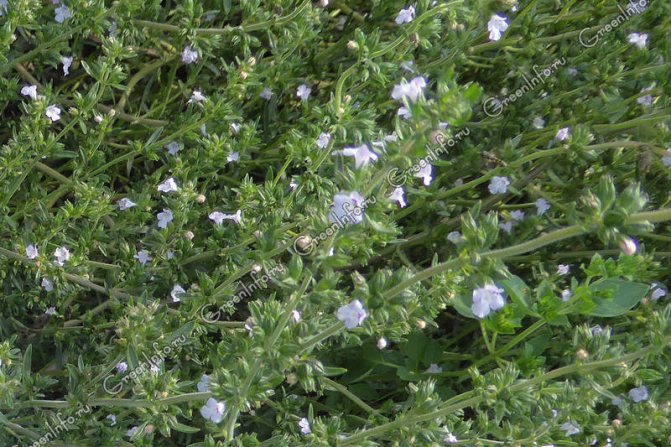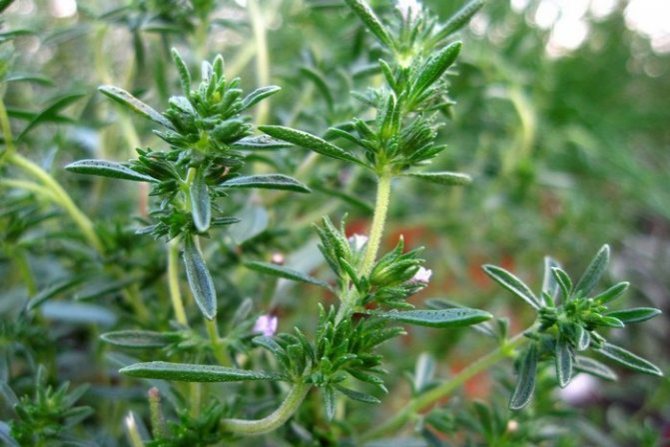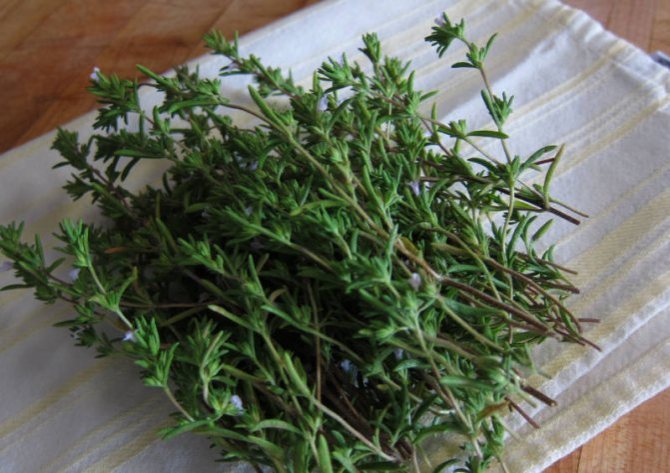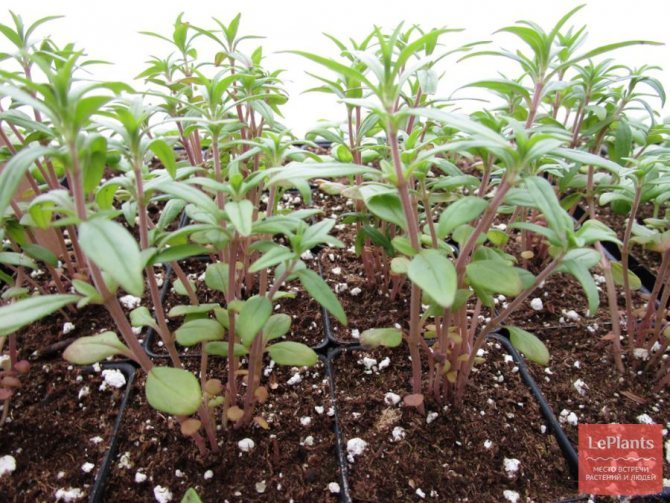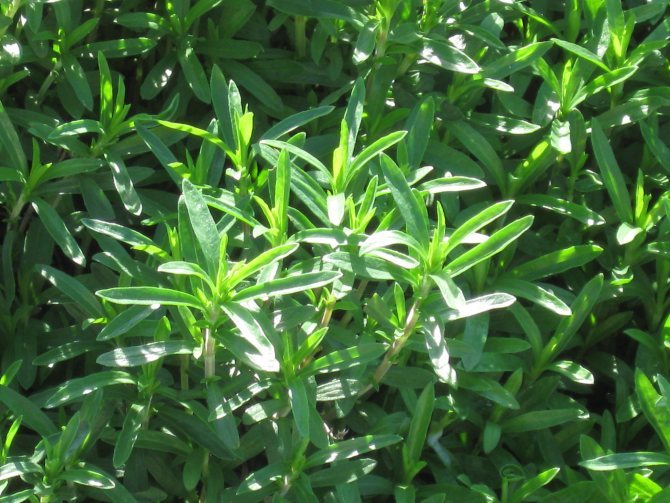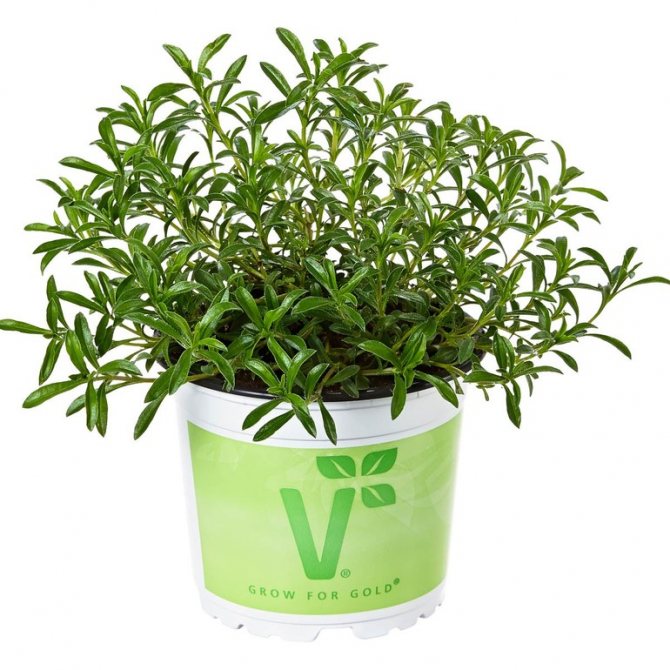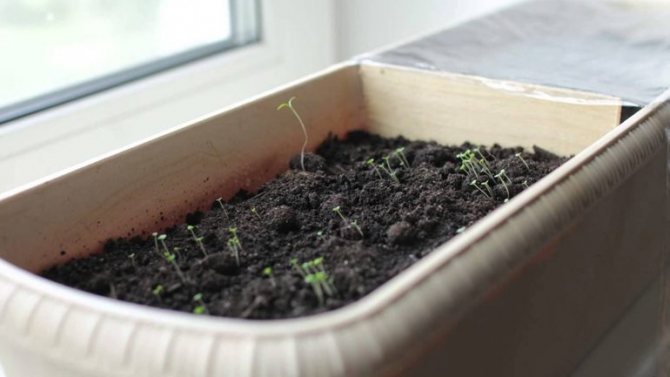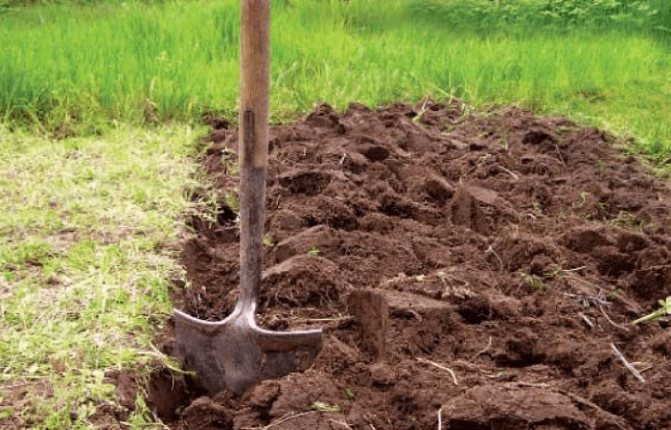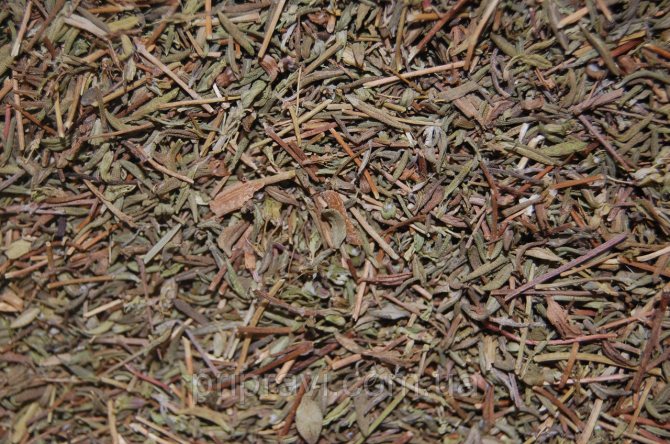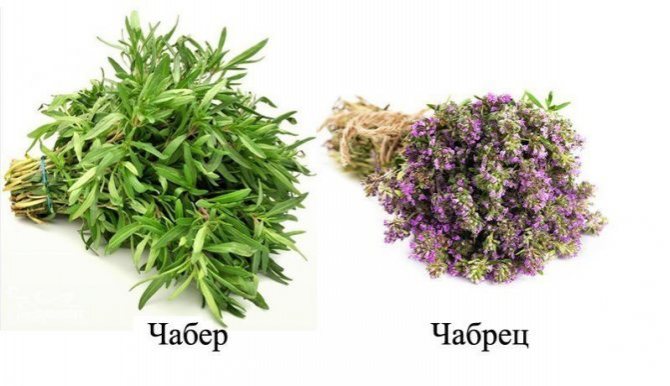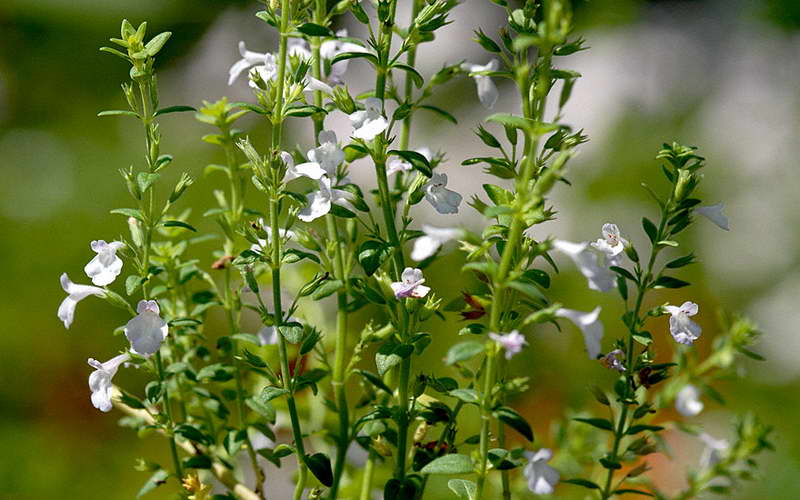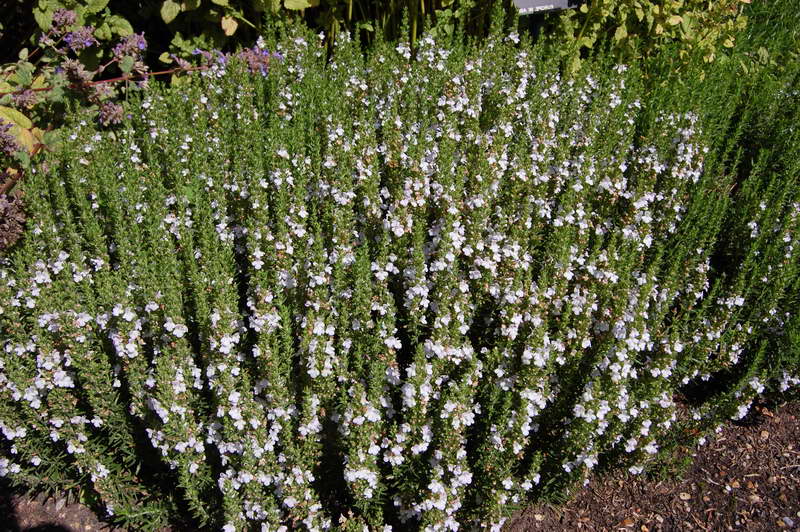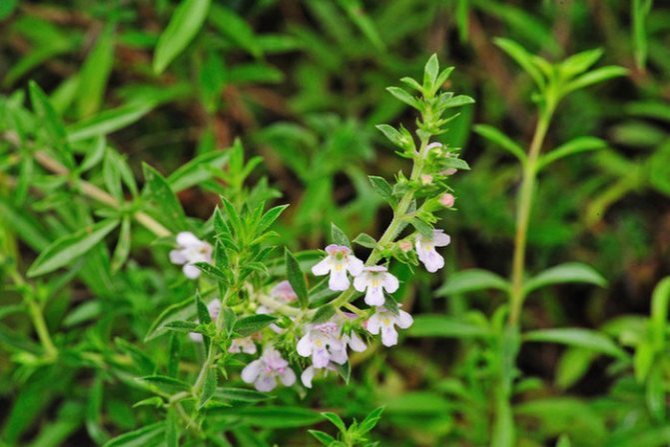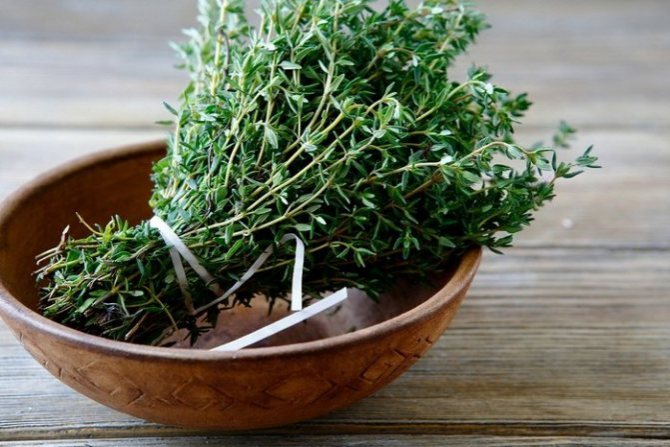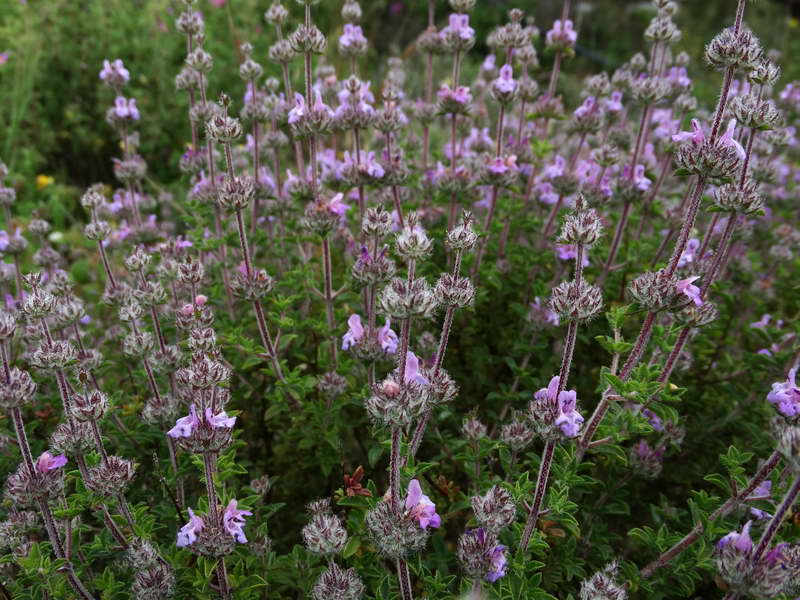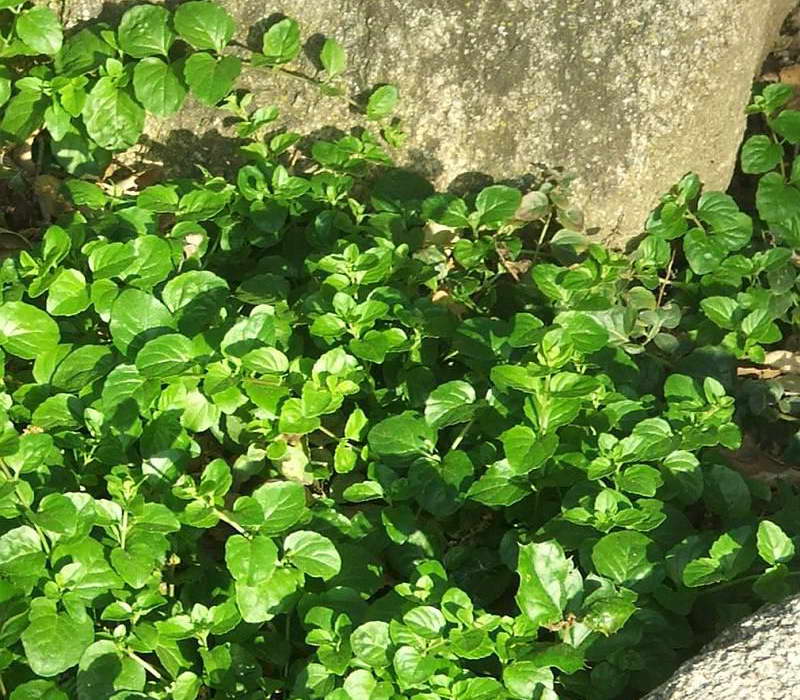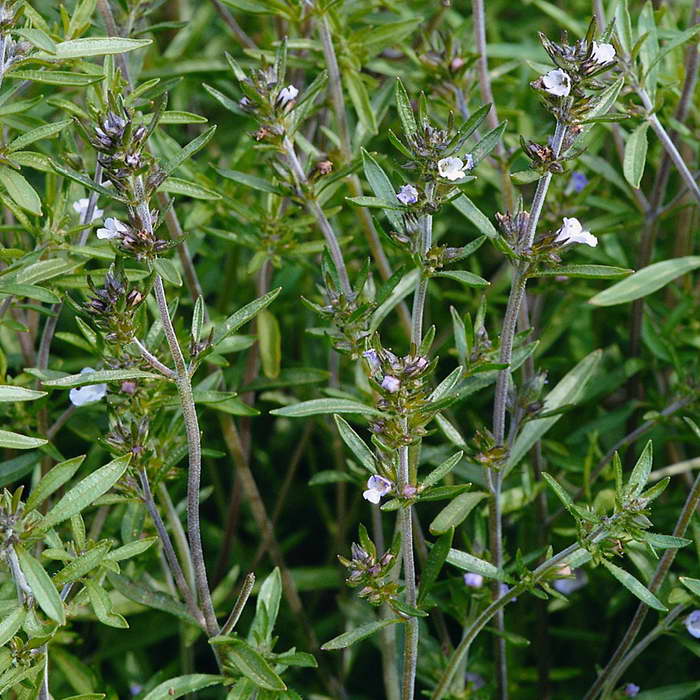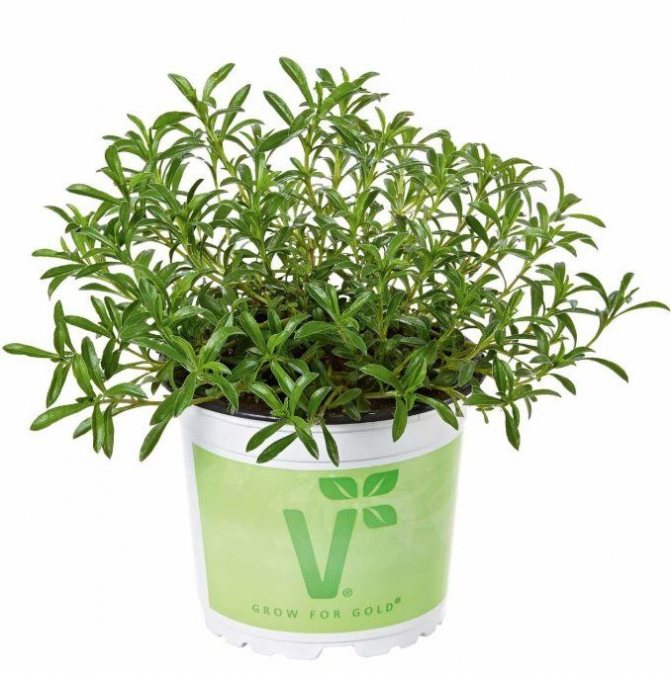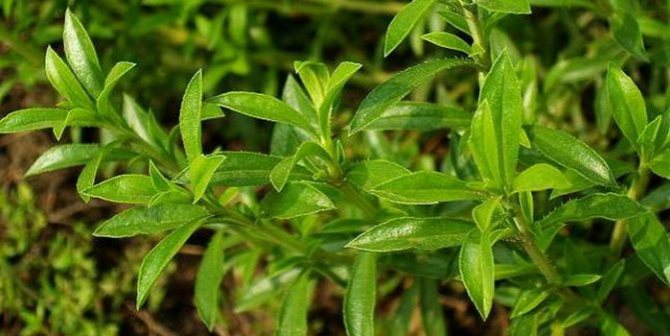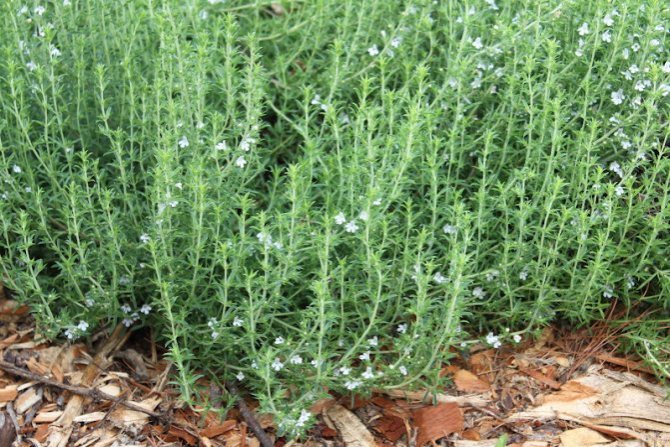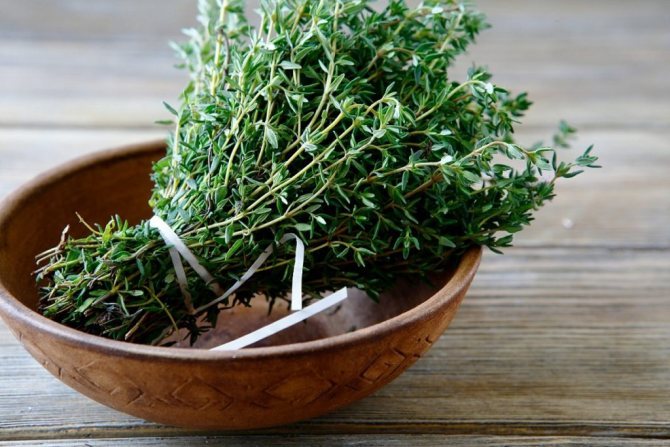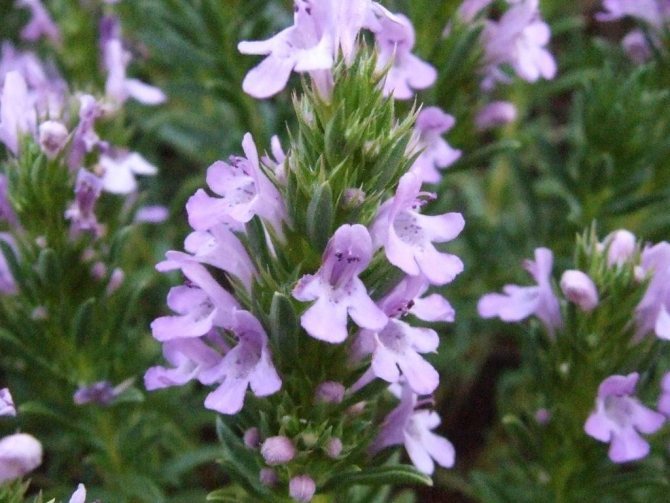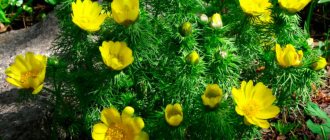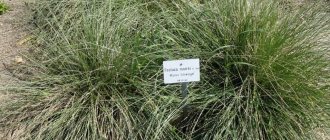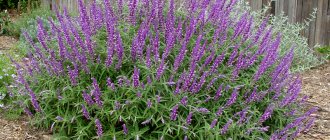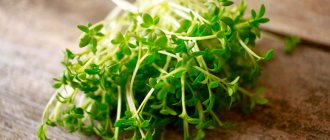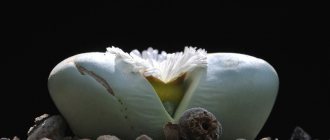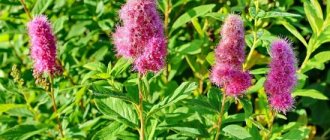A neighbor at the dacha advised to grow savory for health improvement and just for beauty. Savory is recognized as a medicinal plant in many countries, with which I completely agree. He is really capable of curing many ailments, and I found many recipes. So I decided to plant and prepare a small amount of savory for myself and my family. I am sharing information on how to properly plant and care for this plant, because it is not only a healing shrub, but also a pretty greenery for decorating the site.
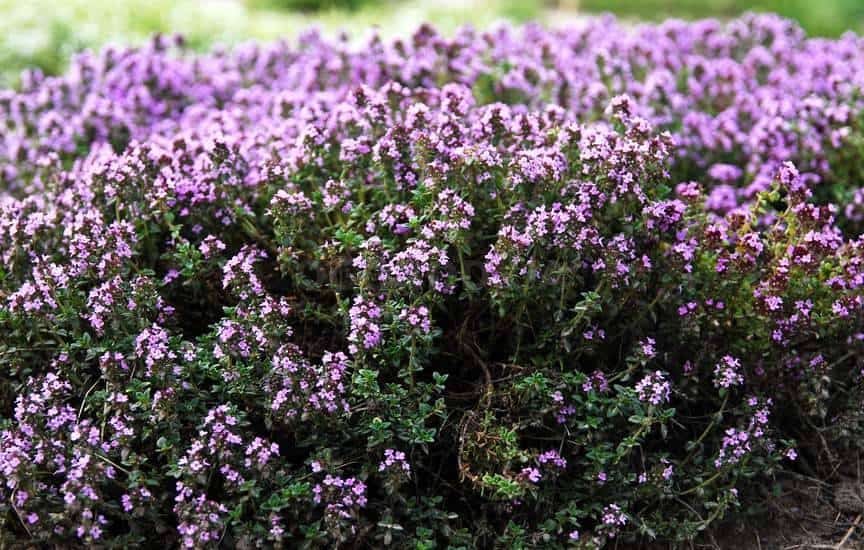
Savory - what is it?
Savory - (lat. Satureja) is an annual herb. Belongs to the genus Lambes or Labiates. A small shrub, growing up to 45-50 cm, has a straight stem, shoots from 15 to 45 cm and gray-green leaves up to 2.5 cm. It blooms in July-August with small white, pink or purple flowers with purple spots.
Growing
The homeland of the plant is considered to be the eastern Mediterranean. Also widely distributed in Asia. Savory is a rather unpretentious plant that does not require a special temperature regime or soil composition. Needs no maintenance other than weeding.
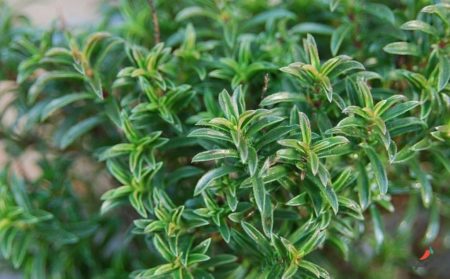

Cultivated as an annual garden plant. It took root well in the conditions of central Russia. Savory is sown in April. Harvesting takes place before flowering, so that the plant does not dry out the leaves, giving all its strength to the flowers. It is in the leaves that all its aromatic and useful substances are concentrated.
How does savory "sound"?
Do you think you are not familiar with such a seasoning? This spice can be found in various mixtures of herbs and seasonings for many dishes. It has an intense spicy bitter taste, vaguely similar to black pepper. The second name - pepper herb - the spice received for its similarity to mint and the presence of peppery, slightly tart notes.
Her aroma is mixed with the smell of mountain pines, sage and black pepper.
How is the seasoning obtained?
A fresh or dried plant can be used as a seasoning. For drying, select young shoots, 15-20 cm. Greens are dried in bunches, or laid out on a dry surface in a uniform, not thick layer, maintaining a temperature of 22-24C. Then the leaves are removed from the stems for further use.
Growing
Savory is grown from seeds using both seedling and non-seedling methods. There is no need for pre-sowing preparation. When the threat of return frost passes, they sow in rows, sprinkle with a thin layer of soil, cover. After the emergence of seedlings, thin out.
It is recommended to start growing seedlings in late spring. The container is filled with garden soil, a little sand is added. At first, the crops are kept under glass or film, then the shelter is removed. The sprouts are gently watered and hardened.
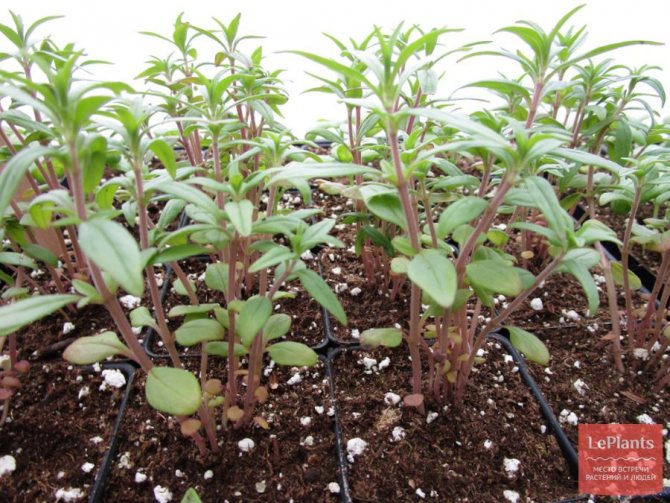

ON THE PICTURE: Fortified Savory seedlings can easily be transplanted into open ground.
Annual Savory provides the owner with abundant seeds for subsequent planting. To prevent self-seeding, it is necessary, when the lower foliage is blackened, to uproot the plant and hang it under a canopy above the paper. The fallen seeds are suitable for use within two years.
Perennial fruits ripen only in the southern regions.... In other climatic zones, you can divide the bush in the spring or root it in the fall.
Medicinal properties and contraindications
Savory shoots and leaves are rich in unique natural antioxidants that can prevent diseases and strengthen the immune system in general. The fiber in the plant is able to lower the amount of low-density lipoprotein (bad cholesterol).
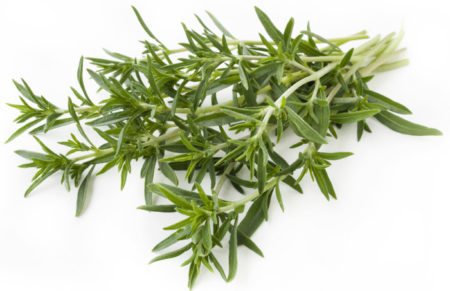

Due to the content of phenolic esters in the leaves, savory has the following properties:
- antiseptic;
- antimicrobial;
- antifungal;
- digestive;
- expectorant;
- antiparasitic;
- tonic.
In alternative medicine, decoctions and tinctures of this herb were used to treat angina and bronchitis, indigestion. Savory essential oil has a pronounced tonic effect, is used in pulmonology, infections, in cosmetology. He is also credited with the properties of a powerful aphrodisiac.
Savory, possessing many properties, can equally benefit and harm. It is very important to remember that all natural products and herbs have contraindications. It should not be consumed if you have:
- diseases of the cardiovascular system;
- dysfunctions of the endocrine system;
- a stomach or duodenal ulcer;
- pregnancy and lactation.
Individual intolerance to the product may also appear.
Types of savory with photos and names
To date, there is no variety of varieties of this plant - in our region, garden savory is mainly cultivated. However, this species nevertheless gave rise to some local varieties, differing from each other in color, size, foliage, early maturity.
Savory garden Satureja hortensis
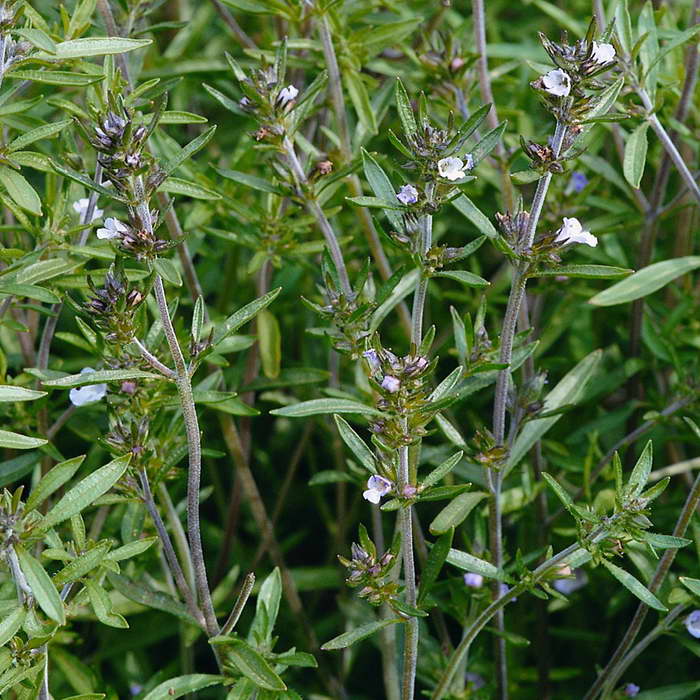

Savory garden Satureja hortensis photo
Most often grown by our gardeners. It is a herbaceous annual about 40 cm high. The leaves are narrow, oblong, dark green in color, the flowers are pale pink. It exudes a sweetish aroma (similar to thyme, oregano).
Mountain savory Satureja montana
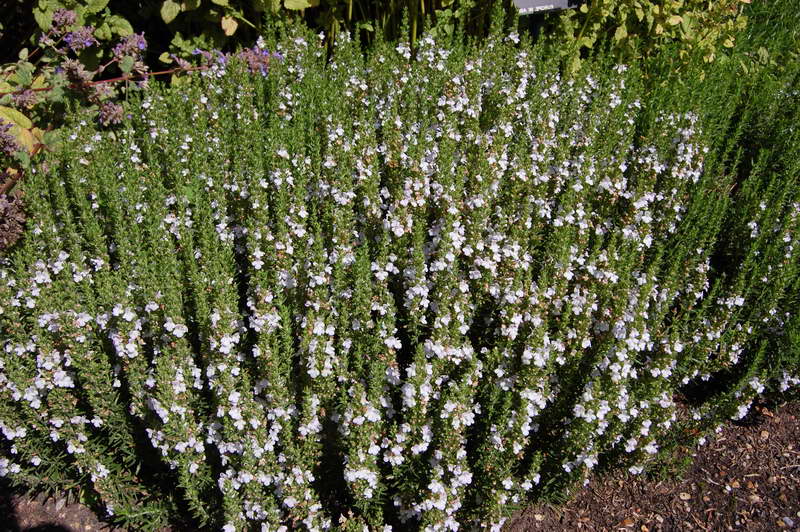

Savory mountain Satureja montana photo
A semi-shrub about half a meter high. The leaves are narrow, pointed, dark green, white flowers. Creeping shoots give a special decorative effect.
Savory lemon or African Satureja biflora
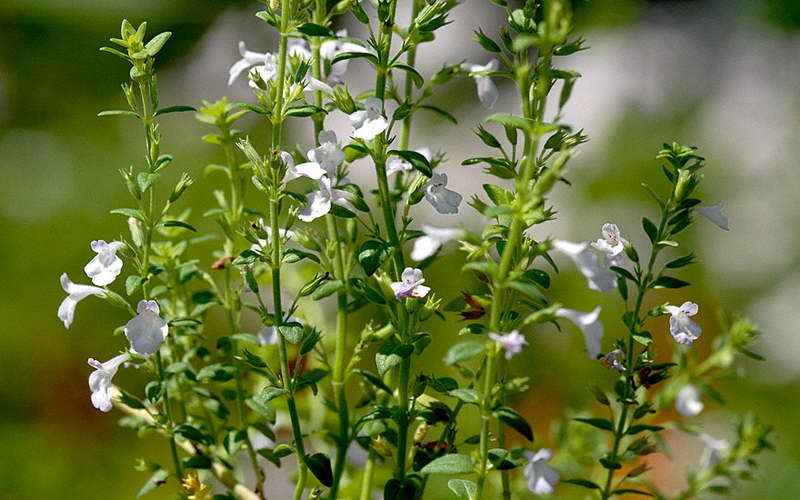

Savory lemon or African Satureja biflora photo
Perennial plant with creeping shoots. The flowers are pinkish, the leaves are small, bright green. It emits a pronounced lemon aroma.
Savory Cretan or pink Satureja thymbra
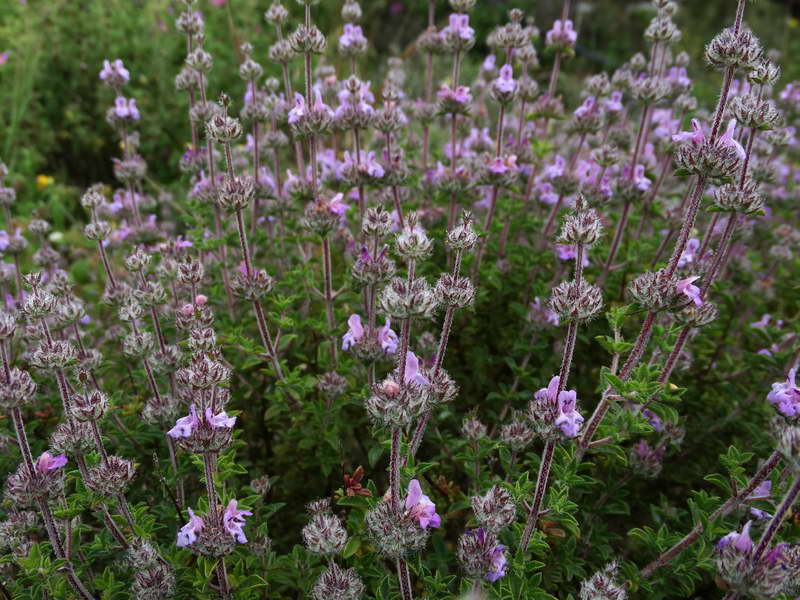

Savory Cretan or pink Satureja thymbra photo
Perennial undersized plant, erect shoots, small grayish flowers are collected from the inflorescence-shields. The aroma is thyme.
Savory Douglas Satureja douglasii
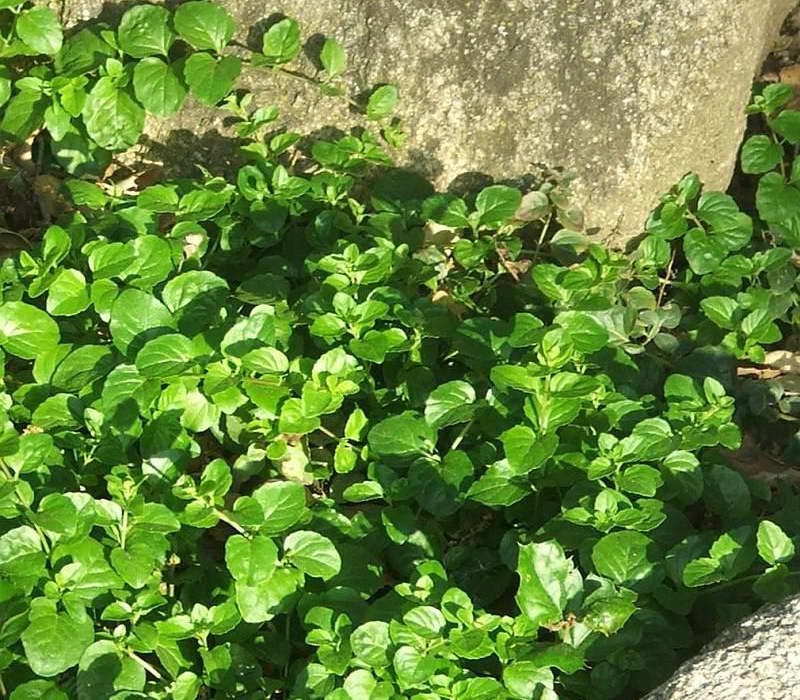

Savory Douglas Satureja douglasii photo
Herbaceous perennial with creeping shoots. The leaf plates are oblong with rounded tops.
The use of savory in cooking
And yet the main area of application of savory is cooking. Many cuisines, such as Balkan, Caucasian and Mediterranean, are generally difficult to imagine without this seasoning.
The spicy aroma of savory perfectly complements meat, vegetable and fish dishes. It is part of the garni bouquet - a classic blend of French herbs.
What dishes are added?
Fresh herbs are used in the preparation of soups, salads, all kinds of sauces. It is usually added to canned cucumbers, tomatoes, bell peppers, and pickled mushrooms.
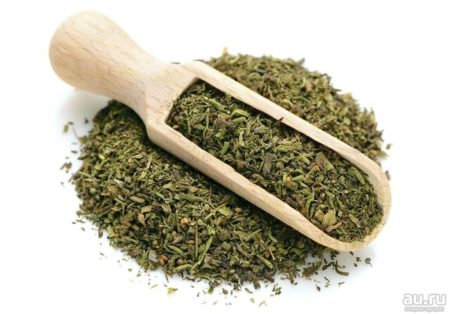

Dried savory is great for:
- dishes from beans and all legumes;
- marinating chicken, fish, meat, especially lamb;
- vegetable stews, baked vegetables, any boiled cabbage;
- making soups;
- fried fish;
- hot tea for colds.
The spice is used to create aromatic vinegar and oil (infused).
What spices are combined with?
Savory is good in itself, but in combination with other spices, you can achieve an exquisite taste and unique aroma of the dish.A great bouquet will turn out if you add oregano, marjoram, basil, rosemary, sage, garlic, bay leaves, black and red peppers.
What to replace?
If necessary, you can replace savory in the recipe with its closest relative - thyme. The aroma and tart, bitter taste of these herbs are so similar that if fresh thyme is finely chopped, it will be almost impossible to catch the difference.
Suitable for replacing sage. Its leaves give the dish the tangy piney flavor characteristic of savory.
Growing savory from seeds at home for seedlings
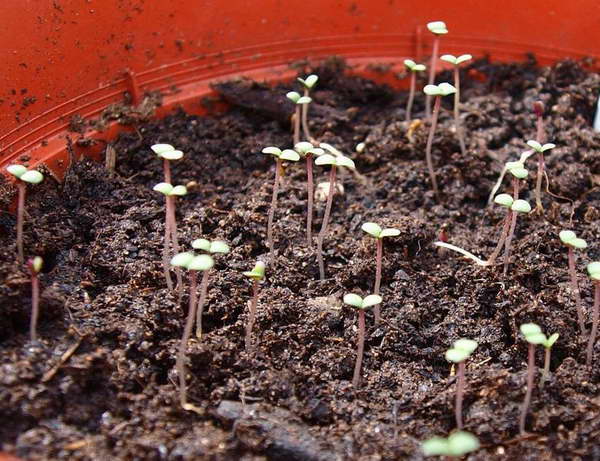

Savory from seeds photo shoots
It is not difficult to grow savory from seeds on a windowsill. For indoor cultivation, sowing is carried out in March (seedling boxes are used). Pre-hold the savory seeds in a damp cloth for 24 hours and dry until they are free-flowing. The seeding depth is 0.5-1 cm, the distance between plants is 3-4 cm.
After sowing, spray the soil with a fine-dispersed sprayer to maintain the moisture content of the crops in the container with foil. Seedlings appear on the 8-10th day after sowing, remove the film.
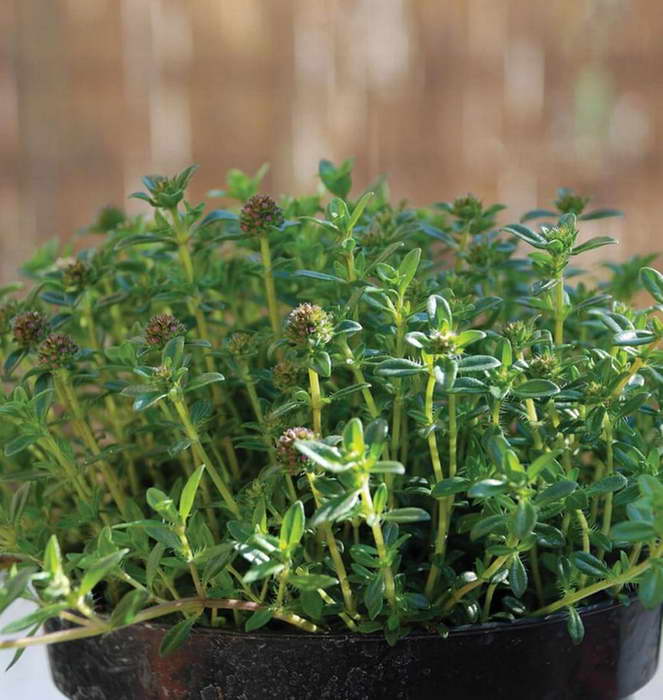

Savory seedlings ready for planting photo
Water in moderation, provide bright diffused lighting with long daylight hours. Before planting, the seedlings are hardened in the fresh air for 1.5-2 weeks.
Savory and thyme - what are the similarities and differences?
The similarity between these two herbs begins with the name. Savory is often mistakenly referred to as thyme. They belong to the same plant genus, both contain essential oils, are known for their beneficial properties and are used in cooking. Thyme, also known as a type of thyme, is better known as a medicinal plant. But, even being the closest relative, thyme does not have a rich taste, and cannot be a full-fledged substitute.
The success of your culinary products depends on the correct choice of spice. Give preference to natural seasonings, follow the recommendations for use, and each of your dishes will become a real little masterpiece.
Description of the plant
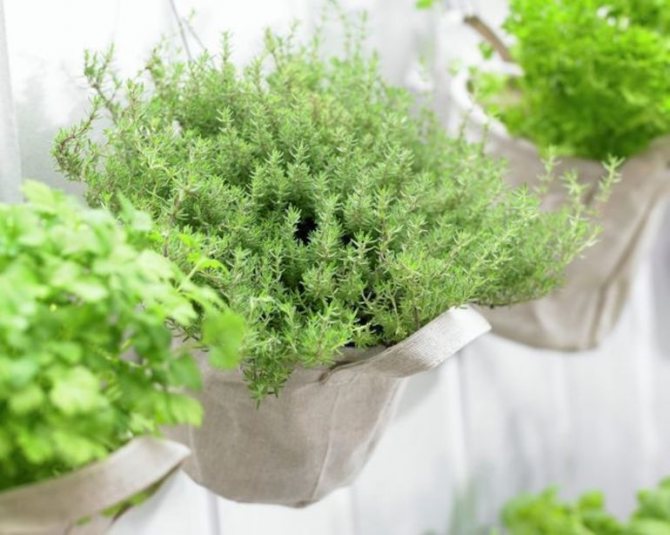

Savory belongs to the labiate family. There are two common types of this shrub: garden savory, which is an annual plant, and mountain savory, which is a perennial.
Garden savory is also called fragrant for its wonderful aroma. The plant is undersized. It has many branches. The stem is lignified below. Together with it, the shrub reaches 25-50 cm in height. The stem is not uniform in color, covered with small hairs. The roots are extremely poorly developed. They are located in the surface ball of the soil.
Savory leaves are pointed, glands are punctate. The length of the leaf is 1.5-2 cm, the color is gray-green. The flowers are small, collected in inflorescences of several pieces. They can be white or pink. The seeds bloom and ripen for a long time and are able to maintain their germination capacity for up to 2 years.
Today, many amateur gardeners breed savory as an ornamental plant and plant it in a beautiful pattern in flower beds or along garden paths. You can also grow it in a pot on a windowsill or balcony as an ordinary houseplant.


Savory is very moody. It does not tolerate the cold, so you need to grow it in a place protected from drafts. It is advisable to plant it in a place where sunlight gets well. The only thing that garden savory is not too picky about is the growing soil. It takes root especially well on lands that have been cultivated and heavily fertilized. The place where vegetables were previously planted and organic fertilizers were applied is also suitable.
Diseases and pests
Diseases and parasitic insects are identical to those of the garden savory. Of the most common diseases - rust, of parasites - aphids. If detected, timely spraying with chemicals is required.
So, mountain savory - perennial shrub... In its natural habitat, it is found in hot regions.Cultivation in our country is permissible if the plant is provided with a warm area protected from drafts. Savory mountain has a wide application: from medicine to cooking.
If you find an error, please select a piece of text and press Ctrl + Enter.
How to care?
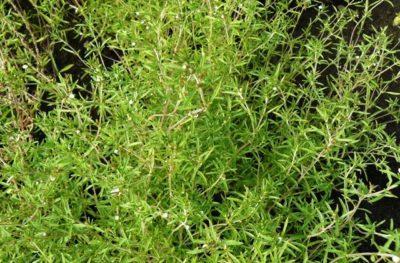

The following are the basic parameters that are required in the care process.
- Temperature... Optimum performance is 20-27 degrees. Does not tolerate drafts.
- Shine... Requires good lighting. Loves the sun and direct sunlight. May dry out in a dark place.
- Top dressing... Needs nutritious fertilizers. You can spill the bushes 2-3 times a season with a diluted Rost solution. If the soil is fertile, no fertilizer is required.
- Loosening... Do after watering. To prevent the soil from compaction, it must be mulched.
- Weeding... It is imperative to promptly remove the weed that will shade the savory shoots.
- Humidity... A suitable indicator is 45-55%. You do not need to spray the plant (or rarely).
In most regions of our country, mountain savory needs to be sheltered for the winter. Seedlings need to be spud and covered with improvised material - leaves, straw. In areas with harsh winters, the savory should be dug up, potted and kept in the basement.
Savory garden Fragrant whether it is perennial or not. Harvesting and storage
It is not enough just to know how to grow savory properly - this spice must be properly collected and harvested. A suitable time for harvesting is considered to be the transition of the plant into the first period of the flowering stage. However, despite this condition, you can collect sheets for use in preparing salads throughout the season.
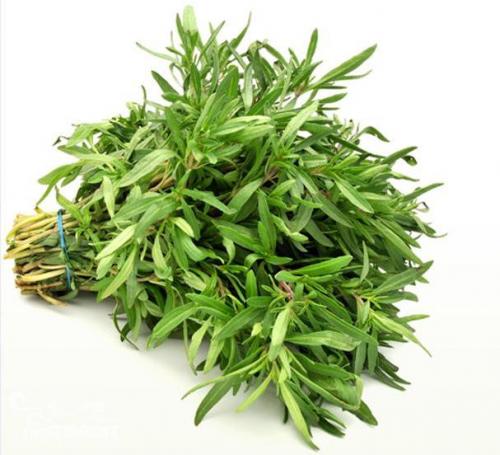

Can be used in salad
A sharpened knife should be used to trim the pepper grass. The maximum height of the shoots left above the surface of the ground should not exceed 10 centimeters. The harvested grass should either be used directly after cutting or placed in water to avoid drying out within a few days.
Long-term storage of fragrant garden savory is possible after harvesting it by drying. To do this, on a dry woven or parchment surface, it is necessary to spread the branches of the cut grass in one layer. Next, the workpiece is placed in a ventilated room, protected from sunlight.
After the grass has completely dried, the leaf part, along with the flower beds, must be cut off and stored in tightly sealed glass containers or in small fabric bags. Dry spices should be periodically checked for signs of decay.
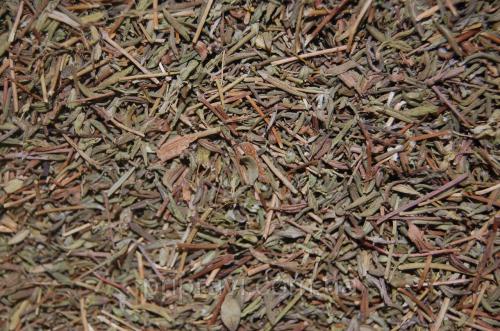

Seed material is obtained by completely cutting off the ripe grass, which must be hung to dry with flower beds from top to bottom on pre-laid paper. After the final shedding of the seeds and their complete drying, they are distributed by handfuls in paper bags.
Sweet savory is a spicy herb, planting and caring for which is not difficult, since it is not a vegetable or an exotic crop, any vegetable garden can serve as a place for its cultivation. However, a crop harvested in one season and properly harvested can be used for several years. In addition, the decorative appearance of the flowering grass allows it to serve as a wonderful element for decorating landscape design.
Also, savory aromatic - it is fresh herbs for dressing various dishes: homemade or cooked for a picnic, and a very useful medicinal herbal component, used both in dried form and found use in medical preparations (however, before using any medicines, it is recommended to find out if is there a contraindication for use).
Why savory is useful, its composition
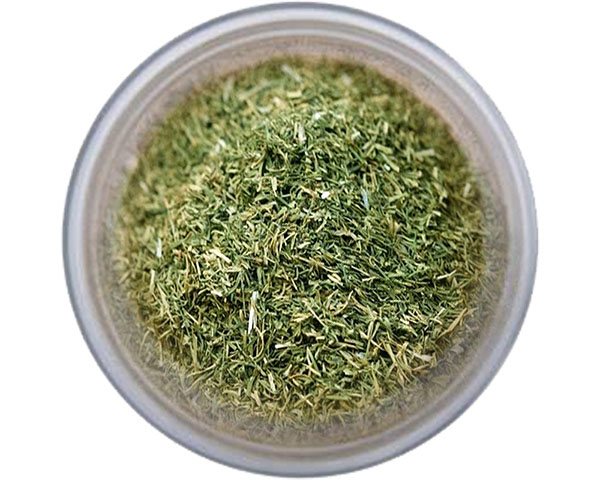

The medicinal properties of the savory herb are due to the unique chemical composition.The plant is useful fresh and dry; valuable essential oil is obtained from it. The spice is used in a healthy diet, has a fragrant smell, pronounced bitterness.
Savory contains:
- mineral salts;
- carotene;
- ascorbic acid;
- antioxidants;
- tannins;
- phytoncides;
- resin;
- mucus and bitterness;
- 10 essential oils;
- vitamins A, PP, group B;
- iron, zinc, copper.
In the human body, carotene is involved in the synthesis of vitamin A, which is a strong antioxidant, improves vision, strengthens the immune system, and increases skin elasticity. Due to its astringent properties, the plant has a bactericidal and anti-inflammatory effect. Thanks to vitamins, it normalizes blood composition and helps to resist infections. Essential oils normalize the nervous system. Bitterness helps to eliminate parasites.

